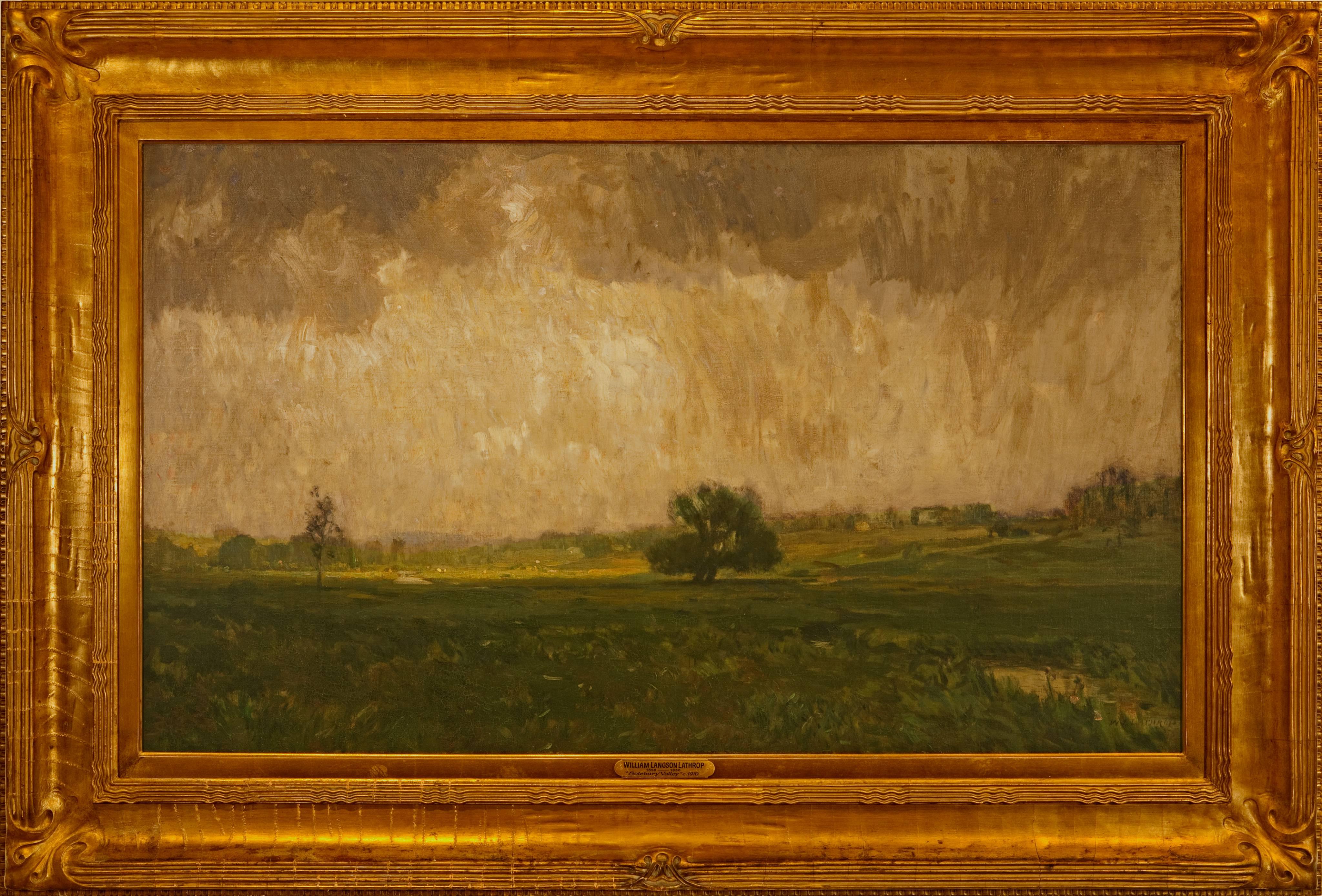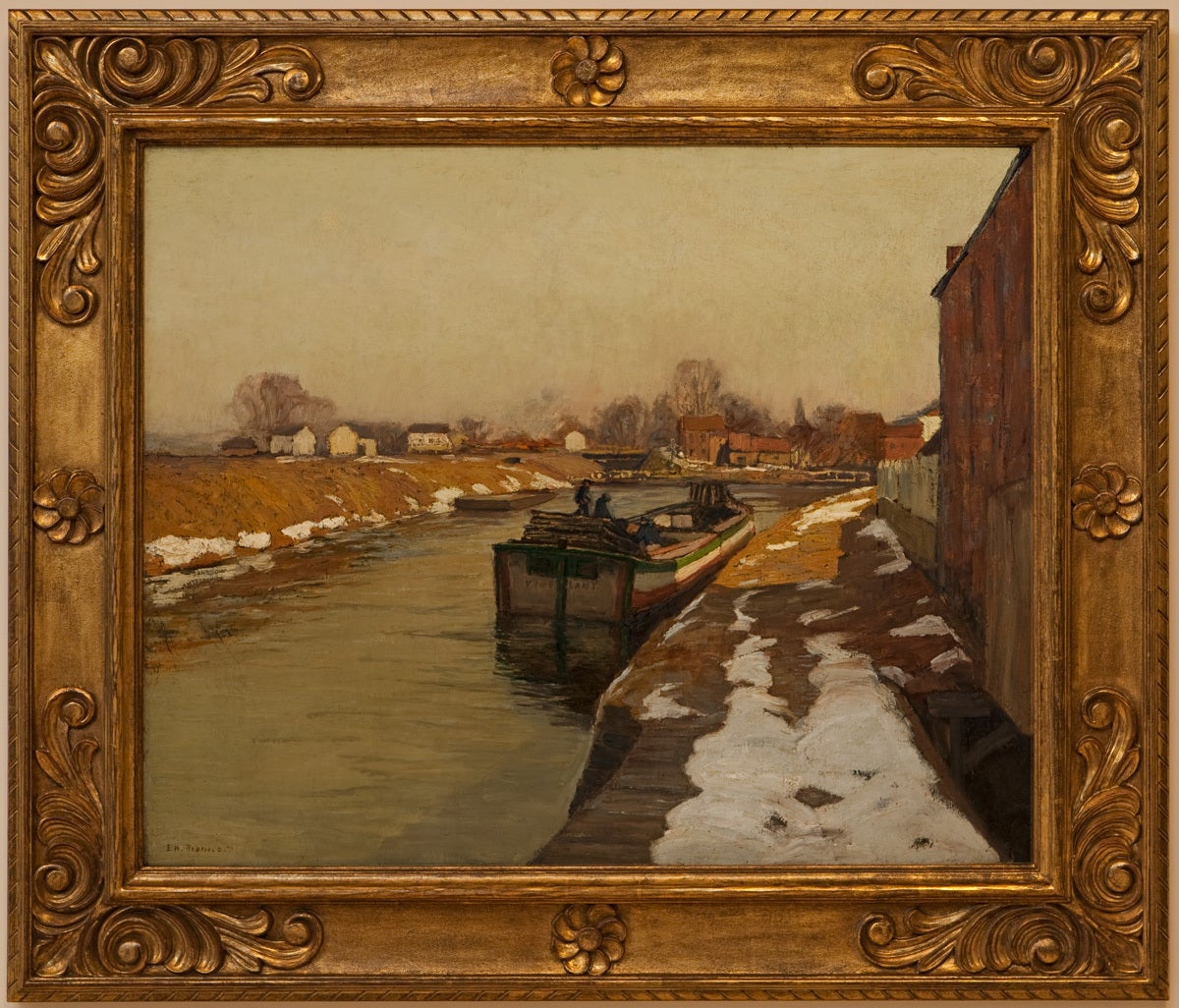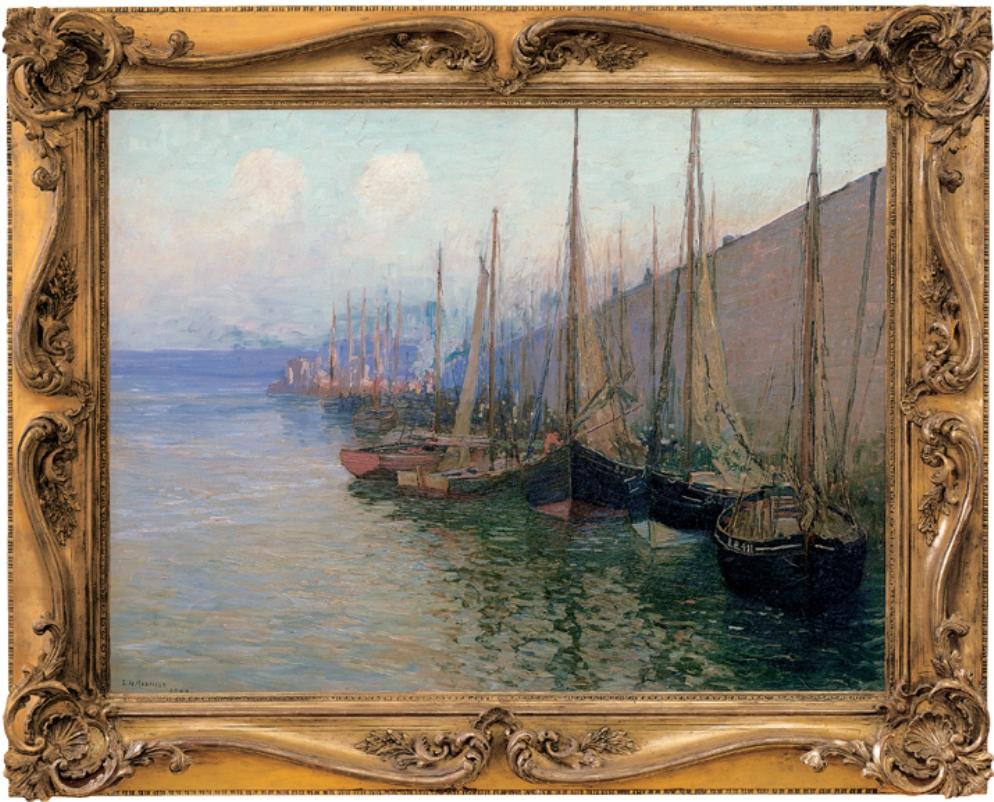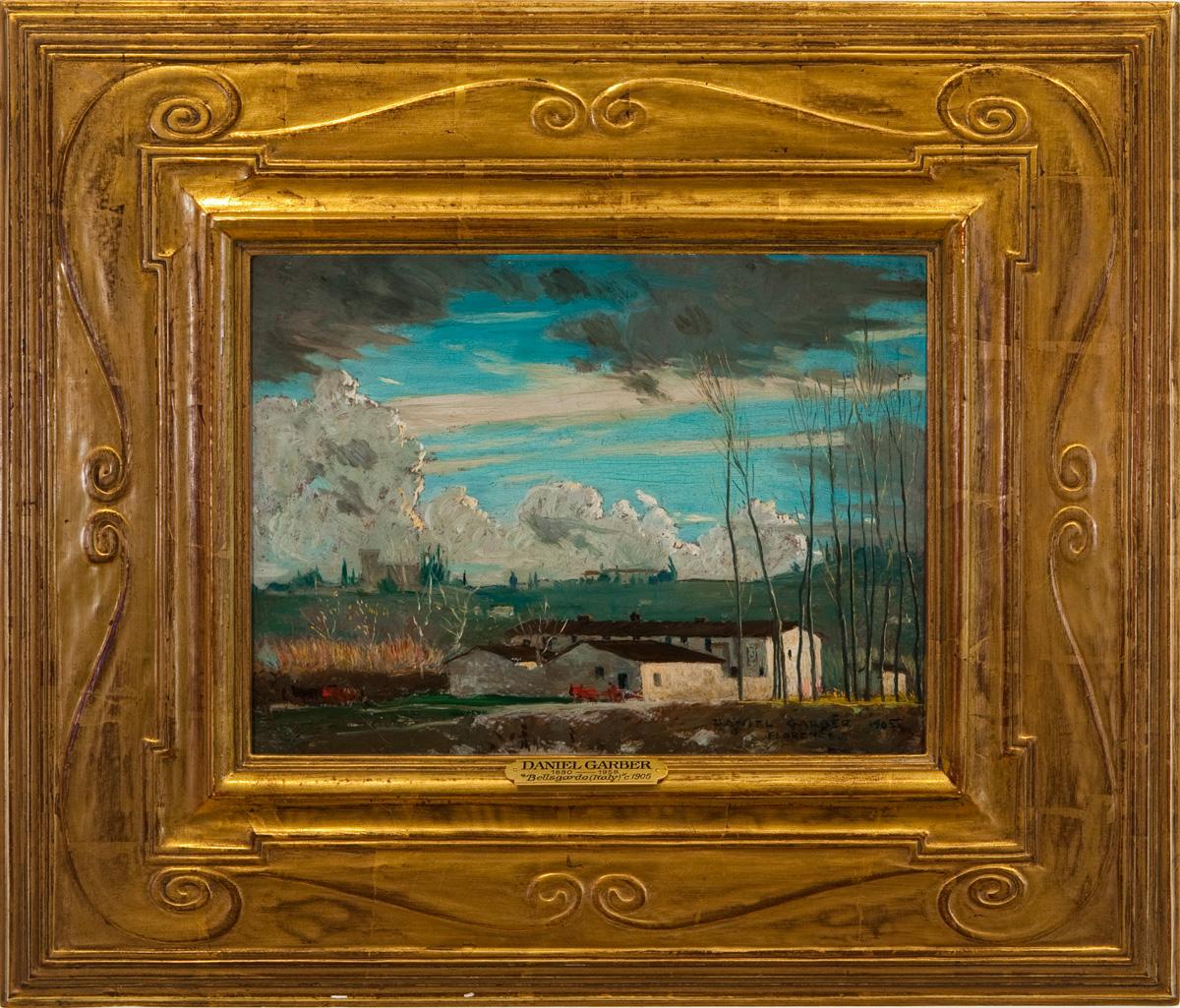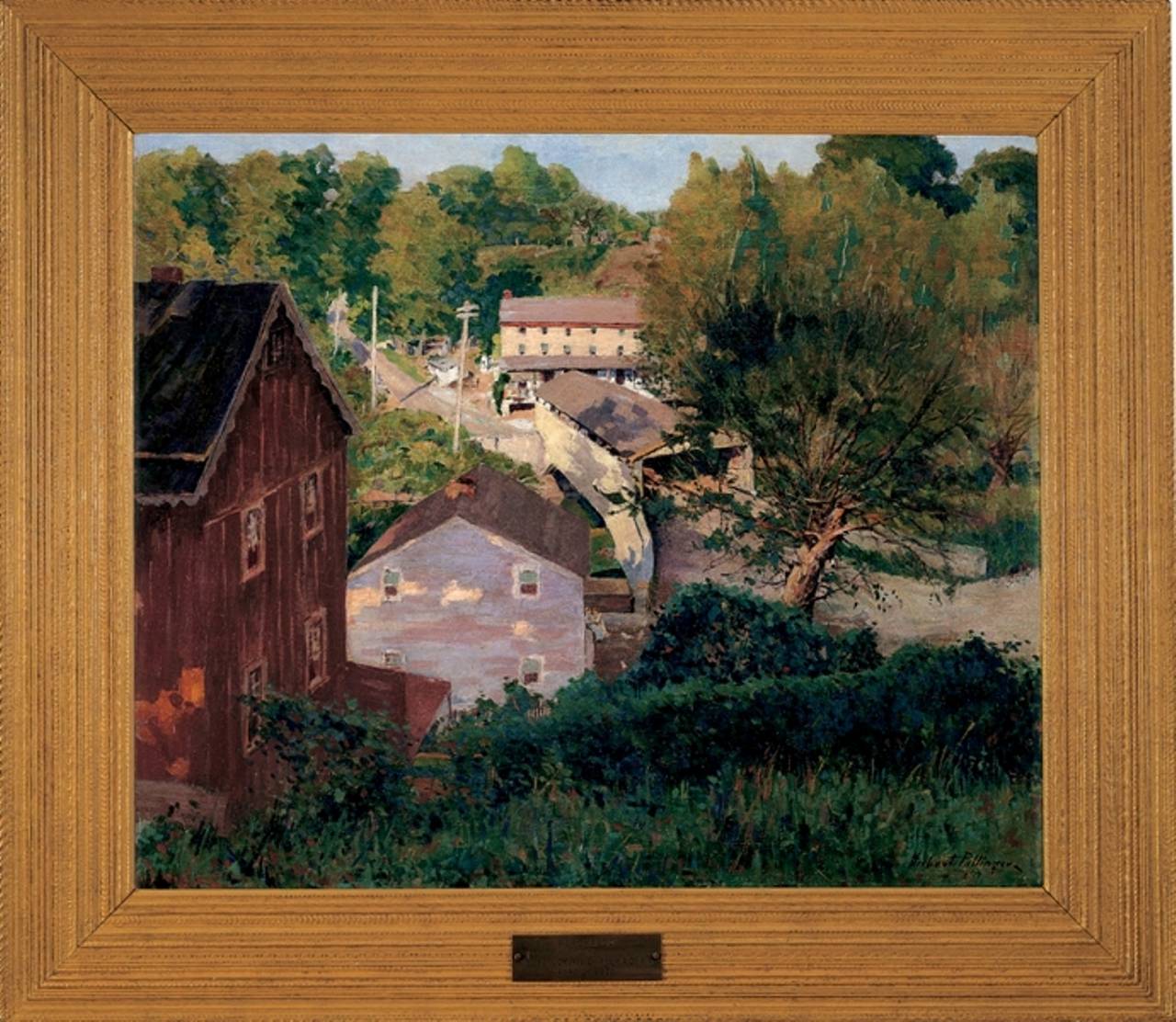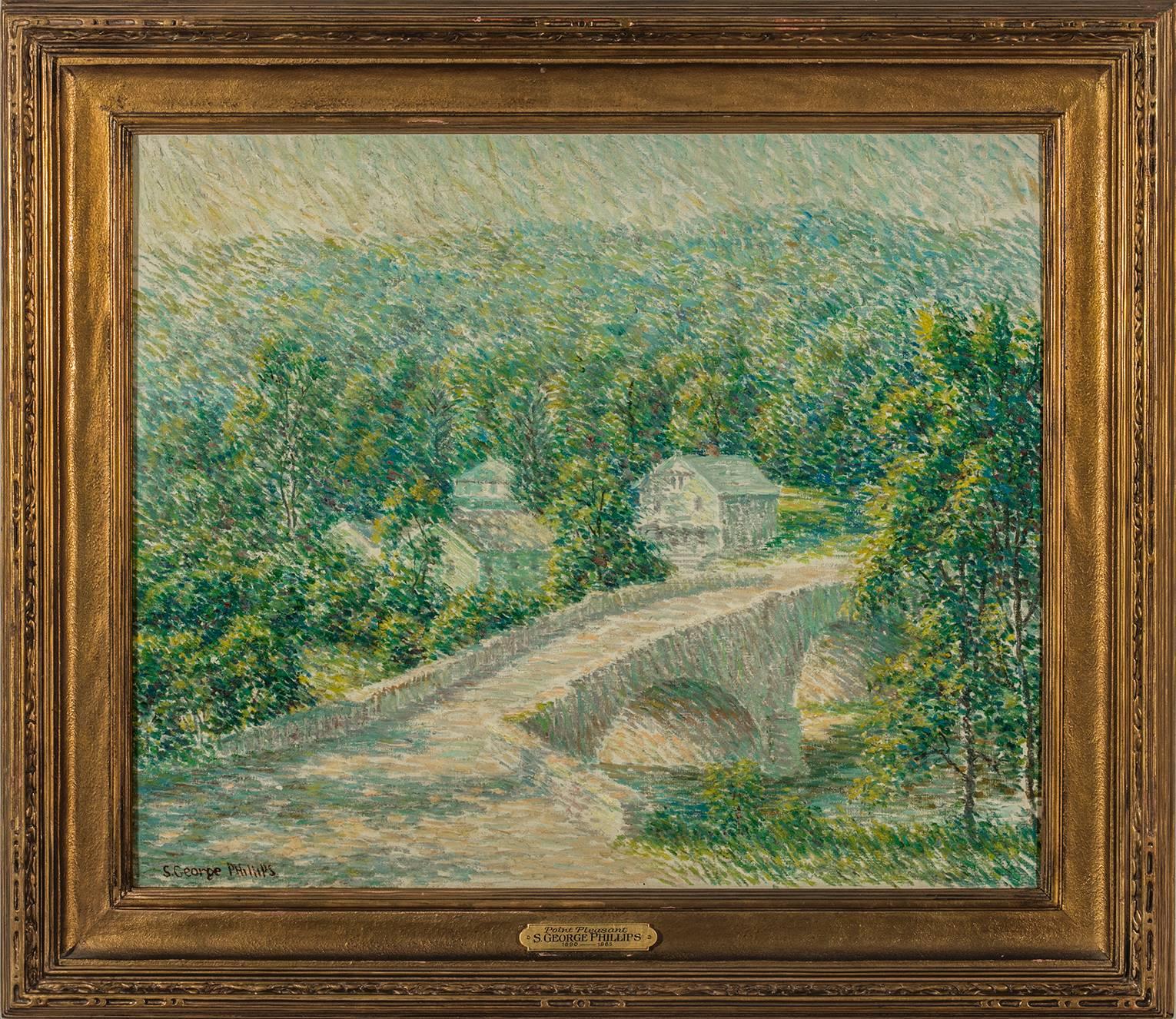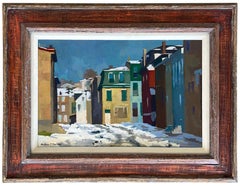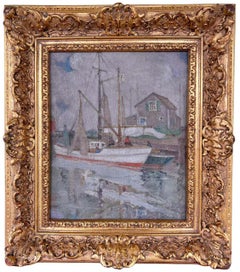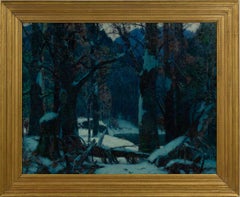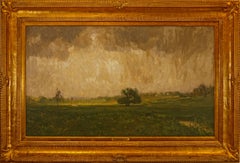
Lakeside in Guatemala
View Similar Items
Want more images or videos?
Request additional images or videos from the seller
1 of 5
Anthony ThiemeLakeside in Guatemala1920
1920
About the Item
- Creator:Anthony Thieme (1888 - 1954, American)
- Creation Year:1920
- Dimensions:Height: 30.5 in (77.47 cm)Width: 32.5 in (82.55 cm)Depth: 2 in (5.08 cm)
- Medium:
- Movement & Style:
- Period:
- Condition:Dimensions listed include frame.
- Gallery Location:Wiscasett, ME
- Reference Number:1stDibs: LU50633249753
Anthony Thieme
Anthony Thieme was born in Rotterdam, Netherlands, on February 20, 1888. After traveling in Europe, England and South America, Thieme settled in Boston. He established a studio in Rockport on Cape Ann. Thieme became very well known for his seascapes and shore scenes. He established the Thieme School of Art in Rockport, of which he was the director. Thieme died on December 6, 1954, in Greenwich, Connecticut.
About the Seller
5.0
Vetted Seller
These experienced sellers undergo a comprehensive evaluation by our team of in-house experts.
Established in 1999
1stDibs seller since 2016
97 sales on 1stDibs
More From This SellerView All
- January in the CityBy Antonio Pietro MartinoLocated in Wiscasett, MEOil on canvas board, signed lower left and inscribed on the reverse, as well as on the frame. This is most likely the original frame for this work made by the artist.Category
Early 20th Century American Impressionist Landscape Paintings
MaterialsOil
- Fishing Boat on the DockLocated in Wiscasett, MEOil on canvas signed in the lower right. Born in Nevada in September 1874, Hall was a resident of San Francisco by 1889. She studied at the Mark Hopkins...Category
Early 20th Century American Impressionist Landscape Paintings
MaterialsOil
- Rocky Mountain VistaBy John TerelakLocated in Wiscasett, MEA monumental 59" x 82" with frame oil on canvas painting of a rocky mountain vista by John Terelak. Signed and dated lower left and inscribed verso. It...Category
1990s American Impressionist Landscape Paintings
MaterialsOil
- Harbor ReflectionsBy Emily HoffmeierLocated in Wiscasett, MEOil on artist board, signed Emily Hoffmeier lower left Most likely a scene of Nantucket harbor and presented in what could be the original frame with a slightly highlighted silver finish. Presents well overall measuring 16.5" x 20.5" including the frame. From 1929 to her death in 1952, Emily Hoffmeier (1888-1952) spent summers on Nantucket, painting in the waterfront studios—first Harborview No. 3 and later moving to the Red Anchor Studio on Washington Street. She exhibited in the Easy Street Gallery, the Candle House Studio, and later at the Kenneth Taylor Galleries. After the death of Maud Stumm in 1935, Hoffmeier took over the direction of the annual Sidewalk Art Show, which she ran for the next eighteen years “with untiring cheerfulness and unflagging interest.” She was one of the founding members of the Artists Association of Nantucket and served on its first executive committee. A graduate of Mount Holyoke College, South Hadley, Massachuetts, Hoffmeier taught art classes at the college for several years. From 1917 to 1951 she was a teacher at West Chester High School in Pennslyvania, where she headed the mathematics department. In addition to enrolling in the plein air classes of Frank Swift Chase...Category
1930s American Impressionist Landscape Paintings
MaterialsOil
- Gathering FlowersLocated in Wiscasett, MEOil on canvas, 33" x 43" including the frame, 25" x 35" canvas only. Signed lower right and signed and inscribed in verso. Henry Robertson Craig R.H.A., R.U.A. Scottish, 1916-1984...Category
1950s Impressionist Landscape Paintings
MaterialsOil
- A Parisian BoulevardBy Henri Alexis SchaefferLocated in Wiscasett, MEOil on canvas, signed in the lower right featuring a vibrant street in Paris. Henri Alexis Schaeffer (1900-1975) was born in Paris, France in e...Category
1950s Impressionist Landscape Paintings
MaterialsOil
You May Also LikeView All
- "Alley Fiends"By John R. GrabachLocated in Lambertville, NJJim’s of Lambertville is proud to offer this artwork by: John R. Grabach (1886 - 1981) John Grabach was a highly regarded New Jersey artist, teacher, and author of the classic text...Category
1930s American Impressionist Landscape Paintings
MaterialsCanvas, Oil
- "Forest Strongholds"By John F. CarlsonLocated in Lambertville, NJSigned lower right. Complemented by a hand carved and gilt frame. Exhibited at the National Academy of Design, 1928Category
20th Century American Impressionist Landscape Paintings
MaterialsCanvas, Oil
- "Solebury Valley"By William Langson LathropLocated in Lambertville, NJSigned lower right. Complemented by a period frame. William L. Lathrop (1859-1938) Deemed “Father of the New Hope Art Colony”, William Langson Lathrop was born in Warren, Illinois. He was largely self-taught, having only studied briefly with William Merritt Chase in 1887, at the Art Students League. Lathrop first moved east in the early 1880s, and took a job at the Photoengraving Company in New York City. While there, he befriended a fellow employee, Henry B. Snell. The two men became lifelong friends and ultimately, both would be considered central figures among the New Hope Art Colony. Lathrop's early years as an artist were ones of continuing struggle. His efforts to break through in the New York art scene seemed futile, so he scraped enough money together to travel to Europe with Henry Snell in1888. There he met and married an English girl, Annie Burt. Upon returning to New York, he tried his hand at etching, making tools from old saw blades...Category
1910s American Impressionist Landscape Paintings
MaterialsCanvas, Oil
- Winter MoonlightBy George William SotterLocated in Lambertville, NJsigned lower rightCategory
1910s American Impressionist Landscape Paintings
MaterialsCanvas, Oil
- "The Canal"By Edward Willis RedfieldLocated in Lambertville, NJJim’s of Lambertville is proud to offer this artwork. Signed lower left. Complemented by a hand carved and gilt frame. Illustrated in "Edward Redfield: Just Values and Fine Seeing" by Constance Kimmerle and the Pennsylvania Academy of the Fine Arts's Exhibition of Paintings by Edward Redfield (April 17 to May 16, 1909) brochure Edward Willis Redfield (1869 - 1965) Edward W. Redfield was born in Bridgeville, Delaware, moving to Philadelphia as a young child. Determined to be an artist from an early age, he studied at the Spring Garden Institute and the Franklin Institute before entering the Pennsylvania Academy from 1887 to 1889, where he studied under Thomas Anshutz, James Kelly, and Thomas Hovenden. Along with his friend and fellow artist, Robert Henri, he traveled abroad in 1889 and studied at the Academie Julian in Paris under William Bouguereau and Tony Robert-Fleury. While in France, Redfield met Elise Deligant, the daughter of an innkeeper, and married in London in 1893. Upon his return to the United States, Redfield and his wife settled in Glenside, Pennsylvania. He remained there until 1898, at which time he moved his family to Center Bridge, a town several miles north of New Hope along the Delaware River. Redfield painted prolifically in the 1890s but it was not until the beginning of the twentieth century that he would develop the bold impressionist style that defined his career. As Redfield’s international reputation spread, many young artists gravitated to New Hope as he was a great inspiration and an iconic role model. Edward Redfield remained in Center Bridge throughout his long life, fathering his six children there. Around 1905 and 1906, Redfield’s style was coming into its own, employing thick vigorous brush strokes tightly woven and layered with a multitude of colors. These large plein-air canvases define the essence of Pennsylvania Impressionism. By 1907, Redfield had perfected his craft and, from this point forward, was creating some of his finest work. Redfield would once again return to France where he painted a small but important body of work between 1907 and 1908. While there, he received an Honorable Mention from the Paris Salon for one of these canvases. In 1910 he was awarded a Gold Medal at the prestigious Buenos Aires Exposition and at the Panama-Pacific Exposition of 1915 in San Francisco, an entire gallery was dedicated for twenty-one of his paintings. Since Redfield painted for Exhibition with the intent to win medals, his best effort often went into his larger paintings. Although he also painted many fine smaller pictures, virtually all of his works were of major award-winning canvas sizes of 38x50 or 50x56 inches. If one were to assign a period of Redfield’s work that was representative of his “best period”, it would have to be from 1907 to 1925. Although he was capable of creating masterpieces though the late 1940s, his style fully matured by 1907 and most work from then through the early twenties was of consistently high quality. In the later 1920s and through the 1930s and 1940s, he was like most other great artists, creating some paintings that were superb examples and others that were of more ordinary quality. Redfield earned an international reputation at a young age, known for accurately recording nature with his canvases and painting virtually all of his work outdoors; Redfield was one of a rare breed. He was regarded as the pioneer of impressionist winter landscape painting in America, having few if any equals. Redfield spent summers in Maine, first at Boothbay Harbor and beginning in the 1920s, on Monhegan Island. There he painted colorful marine and coastal scenes as well as the island’s landscape and fishing shacks. He remained active painting and making Windsor style furniture...Category
Early 1900s American Impressionist Landscape Paintings
MaterialsCanvas, Oil
- "In Port"By Edward Willis RedfieldLocated in Lambertville, NJJim’s of Lambertville is proud to offer this artwork by: Edward Willis Redfield (1869 - 1965) Edward W. Redfield was born in Bridgeville, Delaware, moving to Philadelphia as a young child. Determined to be an artist from an early age, he studied at the Spring Garden Institute and the Franklin Institute before entering the Pennsylvania Academy from 1887 to 1889, where he studied under Thomas Anshutz, James Kelly, and Thomas Hovenden. Along with his friend and fellow artist, Robert Henri, he traveled abroad in 1889 and studied at the Academie Julian in Paris under William Bouguereau and Tony Robert-Fleury. While in France, Redfield met Elise Deligant, the daughter of an innkeeper, and married in London in 1893. Upon his return to the United States, Redfield and his wife settled in Glenside, Pennsylvania. He remained there until 1898, at which time he moved his family to Center Bridge, a town several miles north of New Hope along the Delaware River. Redfield painted prolifically in the 1890s but it was not until the beginning of the twentieth century that he would develop the bold impressionist style that defined his career. As Redfield’s international reputation spread, many young artists gravitated to New Hope as he was a great inspiration and an iconic role model. Edward Redfield remained in Center Bridge throughout his long life, fathering his six children there. Around 1905 and 1906, Redfield’s style was coming into its own, employing thick vigorous brush strokes tightly woven and layered with a multitude of colors. These large plein-air canvases define the essence of Pennsylvania Impressionism. By 1907, Redfield had perfected his craft and, from this point forward, was creating some of his finest work. Redfield would once again return to France where he painted a small but important body of work between 1907 and 1908. While there, he received an Honorable Mention from the Paris Salon for one of these canvases. In 1910 he was awarded a Gold Medal at the prestigious Buenos Aires Exposition and at the Panama-Pacific Exposition of 1915 in San Francisco, an entire gallery was dedicated for twenty-one of his paintings. Since Redfield painted for Exhibition with the intent to win medals, his best effort often went into his larger paintings. Although he also painted many fine smaller pictures, virtually all of his works were of major award-winning canvas sizes of 38x50 or 50x56 inches. If one were to assign a period of Redfield’s work that was representative of his “best period”, it would have to be from 1907 to 1925. Although he was capable of creating masterpieces though the late 1940s, his style fully matured by 1907 and most work from then through the early twenties was of consistently high quality. In the later 1920s and through the 1930s and 1940s, he was like most other great artists, creating some paintings that were superb examples and others that were of more ordinary quality. Redfield earned an international reputation at a young age, known for accurately recording nature with his canvases and painting virtually all of his work outdoors; Redfield was one of a rare breed. He was regarded as the pioneer of impressionist winter landscape painting in America, having few if any equals. Redfield spent summers in Maine, first at Boothbay Harbor and beginning in the 1920s, on Monhegan Island. There he painted colorful marine and coastal scenes as well as the island’s landscape and fishing shacks. He remained active painting and making Windsor style furniture...Category
Early 1900s American Impressionist Landscape Paintings
MaterialsCanvas, Oil
Recently Viewed
View AllMore Ways To Browse
Thieme Anthony
Tapestry Caly
Sailboat Scenes
Golden Rays
Pretty Landscape Painting
Sag Harbor
Vintage Dutch Scenes
California Coastal Oil Paintings
Early 20th Century Italian Oil On Canvas
L Oil Paintings Beach
Large English Landscape Oil Painting
N Green I
Norman French
Stadium Art
Street Scene Cityscape Painting
Texas Town
Vertical Landscape Oil Paintings
Vintage Fishing Boat


